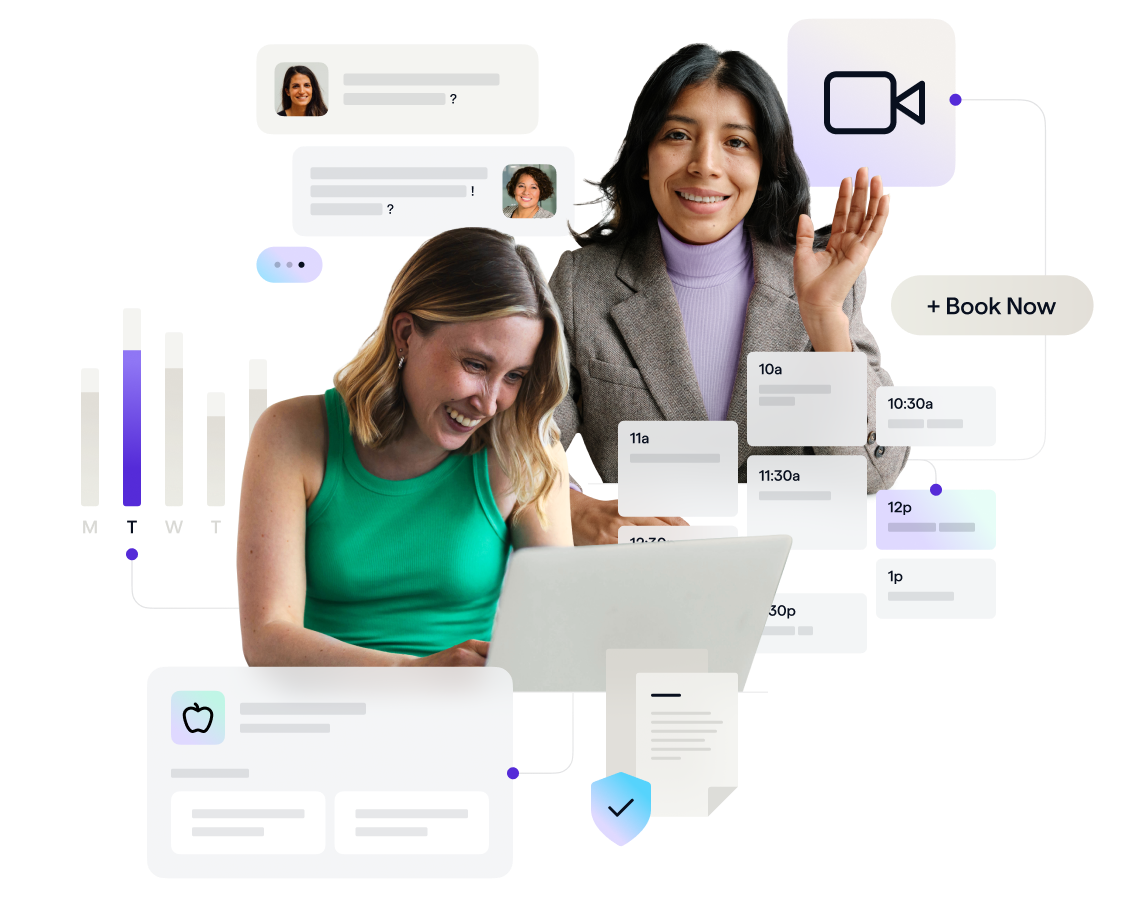

5 steps to convert webinar attendees into patients
Discover how to convert therapy webinar participants into long-term patients with this step-by-step guide. Learn how to create effective drip campaigns, craft compelling calls-to-action, and build lasting relationships with your audience.
Webinars are an excellent tool for therapists to connect with potential patients, educate their audience, and showcase their expertise. However, the ultimate goal for many private practitioners is not just to deliver a successful webinar, but to convert the audience into long-term patients. Converting therapy webinar attendees into patients can be challenging, but with the right patient acquisition strategy, it is possible to leverage webinars to grow your private practice significantly. This article will guide you step-by-step on how to turn webinar participants into patients.
Let’s dive into the steps you can take to create an effective patient acquisition strategy that maximizes the potential of your therapy webinars.
Step One: Host a successful webinar
To begin converting your webinar audience into patients, it’s essential to first host a successful webinar. The key is to focus on the right audience, the right topic, valuable content and an engaging delivery.
- Target the Right Audience: Understanding who you want to attract is critical. You should ensure that your topic speaks directly to the needs and interests of potential patients. For example, if you specialize in anxiety therapy, your webinar should address strategies for coping with anxiety or overcoming related challenges. Tailoring your content to your target audience increases the likelihood of converting attendees into patients.
- Focus on a Relevant Topic: Focus on offering valuable information or solutions to your audience’s problems. Pick a topic that not only showcases your expertise but also encourages participants to seek further help if needed, setting the stage for future therapy sessions.
- Provide Valuable Content: The content you deliver must be actionable and relevant. It should leave participants feeling like they’ve gained something of real value, which will naturally encourage them to seek more personalized support through therapy.
- Give an Engaging Delivery: Webinars should be professional and polished, but also personable. A well-structured presentation, good audio/visual quality, and the ability to engage your audience through Q&A sessions will build credibility and trust.
A well-run therapy webinar lays the groundwork for converting your audience into patients. When you’ve successfully connected with attendees through your webinar, the next step is to nurture that relationship.
Step Two: Create a post-webinar drip campaign
After hosting your therapy webinar, a follow-up strategy is essential for converting your webinar audience into patients. A well-structured drip email campaign is a great way to keep your audience engaged and guide them down the path toward becoming patients.
- Follow Up Quickly: Send a thank-you email immediately after the webinar to express appreciation for their attendance. This email should include a summary of the webinar, any additional resources you promised during the event, and a recording link for those who may want to revisit the content.
- Educational Emails: Over the next week or two, send out emails that build on the webinar’s content. These emails can offer deeper insights, introduce new perspectives on the topic, and include success stories from your past patients (while maintaining confidentiality).
- Direct Invitation: Use the final emails in your drip campaign to invite attendees to focus on calls-to-action. A low-pressure approach works best here, allowing attendees to see the value of continuing their journey with your support.
While setting up a drip campaign can initially sound like a lot of work, the best practice is to automate, automate, and automate. Creating this campaign in an email marketing platform allows you to prepare your content, cadence, and audience list ahead of time, and works for you in the background. This campaign can then be repurposed for future drip campaigns.
By nurturing attendees through an educational drip campaign, you can develop a stronger relationship with them and increase the chances of them converting into patients.
Step Three: Create appropriate calls-to-action
Calls-to-action (CTAs) are an essential part of converting your webinar audience into patients. Each touchpoint in your webinar and follow-up communication should have a clear, compelling CTA that encourages attendees to take the next step in their therapy journey.
- Low-Commitment Options: For attendees who aren’t quite ready to jump into therapy, offer a lower-commitment option such as joining your email newsletter or following you on social media. These simple actions keep them engaged without demanding too much right away.
- Medium-Commitment Options: Encourage attendees to engage in a more direct way, such as scheduling a free consultation or discovery call. This provides a no-risk opportunity for them to see if your therapy approach is a good fit.
- High-Commitment Options: If attendees feel ready, invite them to start therapy by booking an appointment directly. Make this process as seamless as possible by providing an easy-to-use booking link.
By offering a range of CTAs, you give your audience various pathways to continue their relationship with you, each tailored to their readiness to engage in therapy.
{{free-trial-signup}}
Step Four: Continue to demonstrate value
Maintaining contact with webinar participants doesn’t stop with one follow-up email or a drip campaign. To successfully convert your therapy webinar attendees into long-term patients, you must continue demonstrating value over time.
- Invite Them to Future Webinars: Hosting multiple webinars on different topics can help keep your audience engaged. Invite previous attendees to join, and they may decide that your ongoing expertise is what they need to commit to therapy.
- Offer Valuable Resources: Continue sharing blog posts, articles, or tools that provide value. You can also offer exclusive content, like eBooks or checklists, in exchange for further engagement with your practice.
- Personalized Communication: If certain attendees showed interest in specific parts of your webinar, consider sending them personalized follow-up messages or resources that align with their needs. This shows that you’re attentive and committed to helping them.
The more value you provide over time, the more trust you build—and the more likely your audience will be to choose you when they are ready for therapy.
Step Five: Invest long-term
It’s important to remember that not every webinar attendee will convert into a patient immediately. Building relationships and nurturing leads can take time. Some participants may not be ready for therapy for weeks, months, or even a year after attending your webinar.
- Keep Them in Your Funnel: By consistently offering value and staying top of mind, you’ll have a steady pipeline of prospects. Even if someone doesn’t convert right away, maintaining a long-term patient acquisition strategy means they are likely to turn to you when they’re ready for therapy.
- Periodic Check-Ins: Sending occasional emails to check in or offer resources can help keep the relationship alive. You never know when a past attendee will need your services.
- Create a Lasting Relationship: Always be open to engaging with your audience through social media, newsletters, and future webinars. Long-term engagement increases the likelihood of turning casual attendees into loyal patients.
By investing in the long-term conversion process, you build a sustainable patient acquisition strategy that pays off well into the future.

.png)



